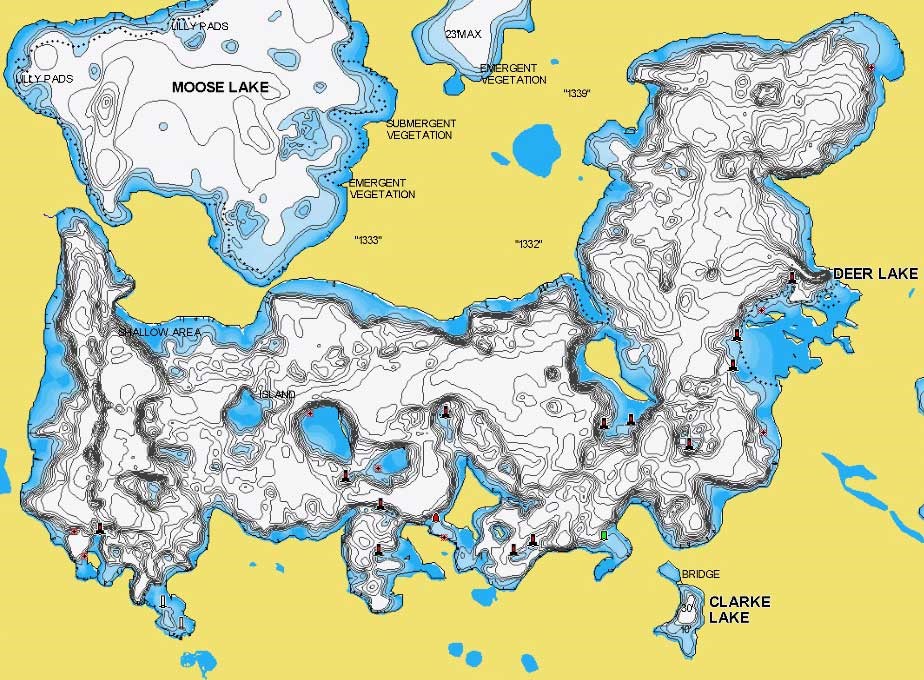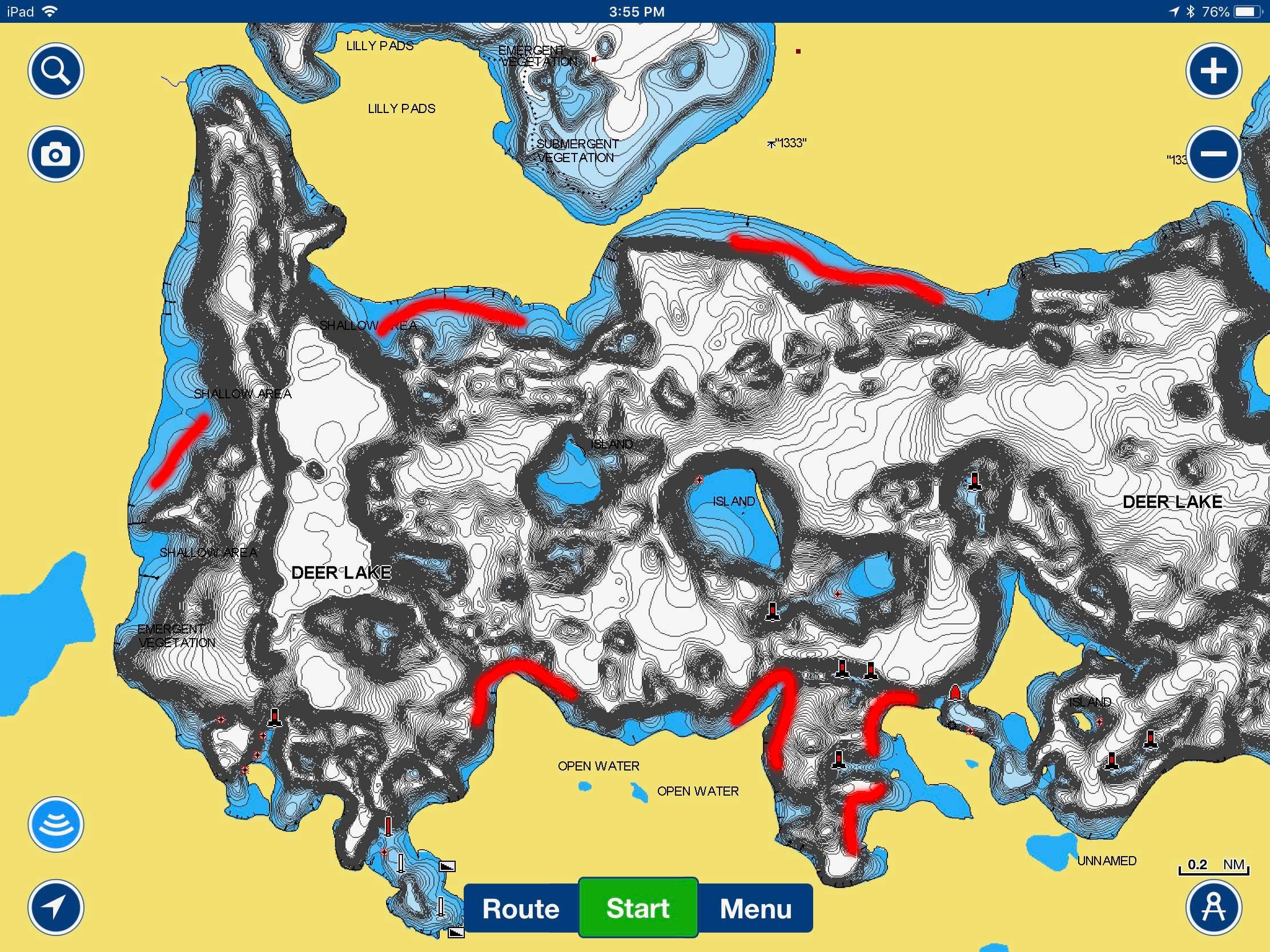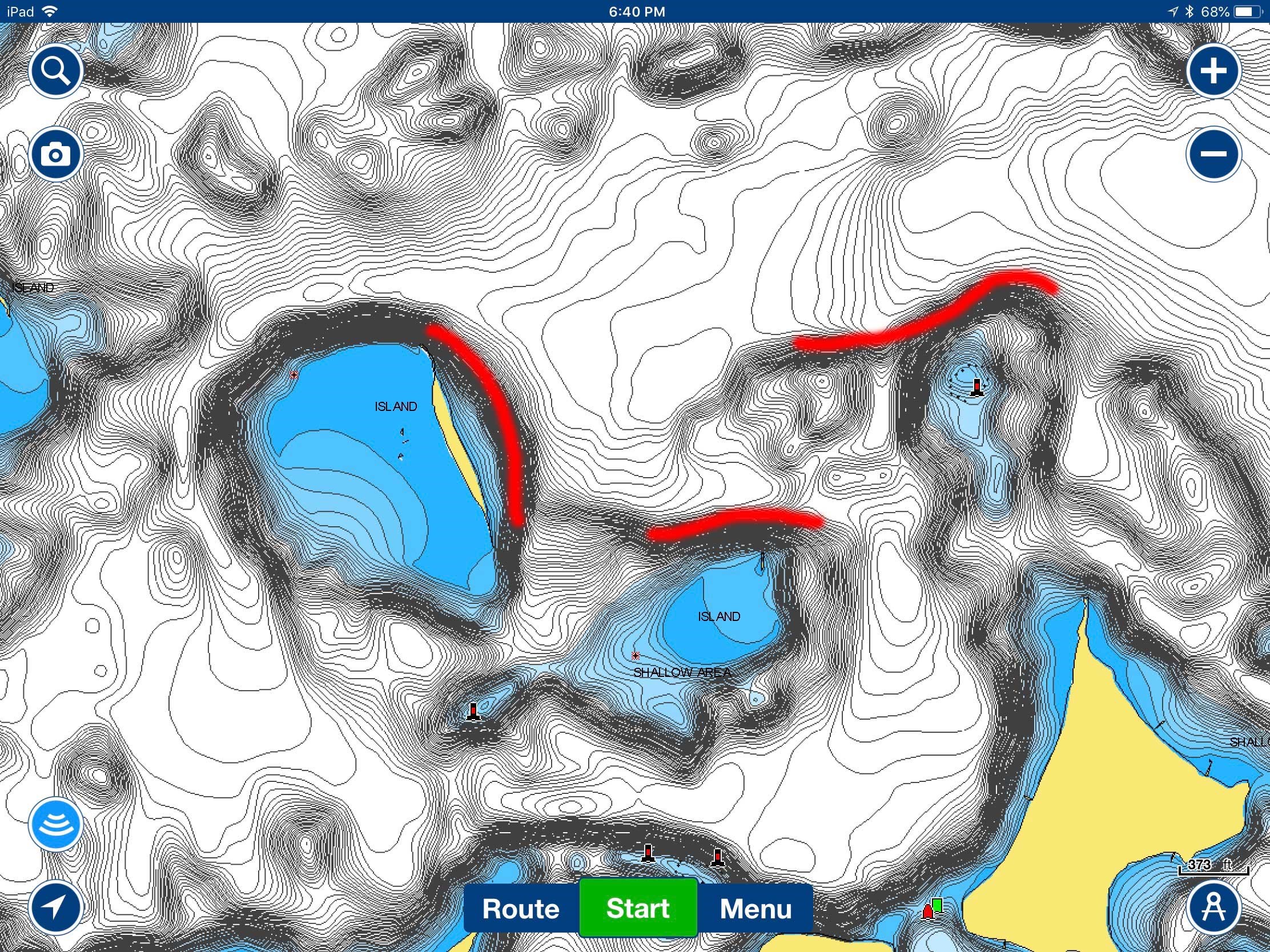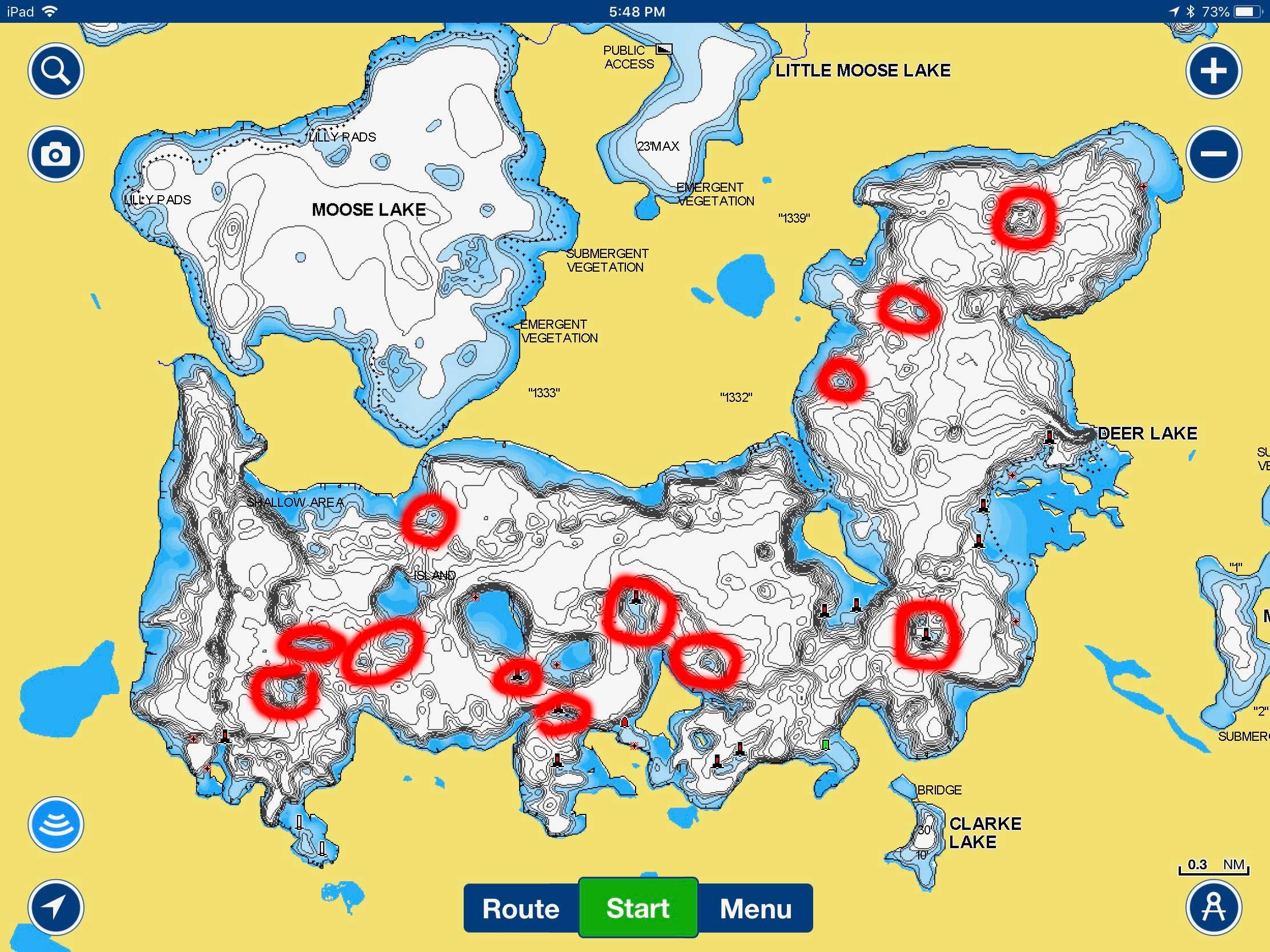
At just over 4,000 acres in size, Itasca County’s Deer Lake is one of the state’s most interesting and unique inland waters. The Deer River flows from this lake, but the lake itself has no natural inlets. Water levels are sustained by rainfall, run-off, and springs.
And because of the distinct mineral makeup of the surrounding rocks and soil, the clear water in Deer Lake has a beautiful turquoise hue that seems to change with the angle and intensity of the sunlight. It’s just one of the reasons shoreline property is sought-after. In fact, the Minnesota DNR ranks its shoreline development as moderate to high.
“Still, Deer Lake is a very relaxing place to fish,” says Team Northland angler and fishing guide Brian “Bro” Brosdahl. “The water and surrounding pine trees make it seem like it’s a lot more remote than it really is.”
The lake is also rich in structure and cover, which includes shoreline points, steep break lines, islands, submerged humps, flats, rocks, and weedbeds. Anglers and pleasure boaters alike, in fact, need to stay alert to avoid skeg-crunching impacts with rocks and boulders in some areas, according to Brosdahl.
“When leaving the public launch ramp in the lake’s southwest corner, for example, keep the outboard trimmed up until you reach the main lake,” the guide advises. “Several other shallow areas are marked by buoys, but it’s always smart to keep an eye on the depth finder wherever you are on the lake.”
Fishing Info
Deer Lake has a reputation for producing quality walleyes, smallmouth bass, and muskies, which feed primarily on ciscoes and yellow perch, according to state fisheries biologists.”It holds a lot of predators,” adds Brosdahl, “but very little in the way of panfish. There are bluegills here and there, but almost no crappies.
“It’s not a lake where you should expect to catch numbers of walleyes, either, but many of the ones you do catch will be nice fish.” To maintain quality walleye fishing a slot limit is in force on the lake. All fish from 17 to 26 inches must be immediately released, and just one walleye in each limit, or part of a limit, maybe longer than 26 inches.
And because the water is so clear—typically about 13 feet of visibility—many walleye and bass anglers fish a lighter monofilament than they’d normally use and/or go with a fluorocarbon leader so as not to spook fish.
Early in the season, the guide recommends walleye anglers focus on fishing shoreline-connected points and flats. “My first choice is a Parrot or Glo Watermelon Fire-Ball Jig with a shiner or rainbow,” he says, “although you could try tipping it with a live leech as well. Walleyes on this lake love leeches.
“Cast and drag/hop jigs on the points, and don’t hesitate to fish shallow now—even 2 or 3 feet of water on cloudy or dark days,” he says. “As water temps rise, they’ll hold deeper.”

Dragging a jig will work on shoreline flats as well, but pulling a Roach Rig, or a spinner rig or Butterfly Blade Rig behind a bottom bouncer, is sometimes a better option because it allows you to cover water more and connect with scattered fish more efficiently.
“Fish in and around newly emerged vegetation on the flats early in the season,” advises Brosdahl. “As spring turns to summer, deep weedlines and main-lake humps become more productive.”
Warmer water on the flats also attracts smallmouths early in the year. Try fishing a minnow-body crankbait, or swimming an Impulse® Swim’n Grub or Impulse Paddle Minnow to locate fish.
Deer Lake is peppered with off-shore humps that hold both walleyes and smallmouths during the warm months and the simplest way to target either species is with a leech under a Lite-Bite Slip Bobber, especially at night for walleyes.

“Trolling a spinner rig with a leech, minnow or nightcrawler is also very productive,” adds Brosdahl. “Pull the rig over and around the hump, and if you don’t get bit, move on to the next one.”
Likewise, he recommends trolling open water over the deep basins this time of year. “You’ll find a lot of suspended walleyes relating to schools of tullibees,” he explains. “If you get near structure—an island or underwater hump—you’ll catch more eater-size fish; bigger walleyes will be out in the deeper basins where the tullibees and whitefish roam. And don’t be surprised if you hook a muskie; they key on the suspended schools, too.”
He suggests trolling deep-diving banana-style minnow baits, or smaller cranks on lead-core line, wherever baitfish show up on the sonar screen.
Come fall, walleye action centers on steep break lines, especially those that drop into deep water.

“There are a number of prime spots on Deer Lake for fall walleyes, but I can recommend the east side of Battleship Island,” he says. “The shallows there drop quickly into 60-plus feet of water.”
Rig a redtail chub or big leech along the breakline, he recommends, or troll a deep-diving crankbait.
Lake maps courtesy of Navionics. For more information, visit: Navionics.com
Vital Stats
Deer Lake
Size: 4,094 acres
Max Depth: 121 feet
Ave Depth: 42.1feet
Shoreline: 26.1 miles
Ave Clarity: 13 feet
Species Present: Walleyes, Northern Pike, Muskellunge, Largemouth Bass, Smallmouth Bass, Yellow Perch, Black Crappies, Bluegills, Pumpkinseeds, Hybrid Sunfish, Rock Bass, Lake Whitefish, Ciscoes, Bowfin, Bullheads, Shorthead Redhorse, Silver Redhorse, Banded Killifish, Various minnows, shiners and darters.

